The Fear & Pleasure of Hideous Things
5 children's books that shaped artist Chelsey Pettyjohn
“There is transformative power in terror, as life has lately taught us, and we count on stories to keep us from forgetting that.”—Maria Tatar
In Angela Carter’s 1984 novel, Nights at the Circus, Sophie Fevvers—a mysterious part-woman, part-swan—is a world-renowned aerialist in a traveling circus in London at the turn of the 19th century. Throughout the story, an American journalist, Jack Walser, interviews Fevvers about her strange and unconventional life living amongst freaks, clowns, prostitutes, and circus animals. He becomes hypnotized by fascination and joins the circus as a clown to learn more about her, but instead, he learns about himself. She and her troupe of hideous, enigmatic, beautiful things transcend traditional social and gender boundaries and inspire personal transformations by provoking curiosity. They reflect alternate realities and expose deep-rooted fears and desires. The heart of the book is about identity and transformation. Fevvers is large, ambiguous, and otherworldly. Is she a man or a woman? Is she real, or is she fiction? Carter seamlessly weaves illusion with reality; fantasy with fact. She challenges society’s imaginary boundaries by humanizing the grotesque. The same can be said of fairy tales—a genre Carter played with in many of her books—they’re surreal and violent, they make no sense, and yet they give us the opportunity to talk about scary things and to learn more about ourselves.
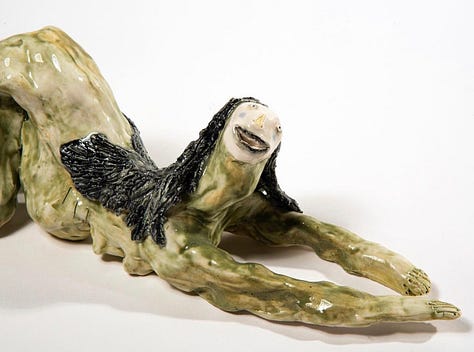

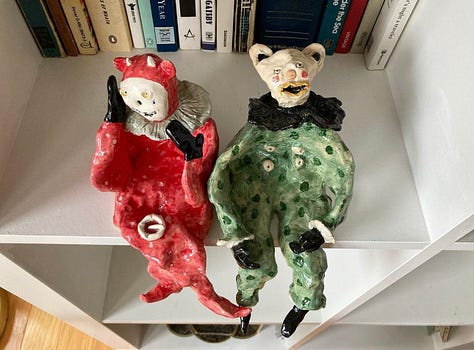


The Brooklyn-based multidisciplinary artist Chelsey Pettyjohn similarly engages with self-made archetypes and iconography. Her performance troupe of hideous clowns, horses, witches, and drifters are symbolic representations of fragmented memories, dreams, and stories read in childhood. These beautiful monsters are hidden under masks and makeup, twisted in their physicality; their poses are often violent and disturbing. With titles like “Empress in Sage Grass (Snail Burlesque),” “Night Ripening,” “Frog Suit Lullaby,” and “Let Sleep Be the Shroud (Black Dog at Midnight),” Pettyjohn’s artwork sounds like a collection of subversive Carter-esque fairy tales. Like Carter, Pettyjohn’s characters dance along the border of chaos and order, revealing cultural contradictions that make up the human experience.
Upon first encountering Pettyjohn’s work, I was immediately captivated. I recognized a shared admiration of fairy tales, folklore, and psychoanalysis. Her dancing troupe of weirdos appear as if plucked straight from a folk tale—where dark, mysterious things delight audiences with sinister appeal. To appreciate Pettyjohn’s morbid cast of characters is to be a part of a special cabal. They speak to my fascination with exploring the connections between story and self, especially in children’s literature. How do these collective fragments from surreal experiences transform us? Haunt us? What do they reveal about our values as artists? As humans? Moonbow is less about recommending children’s books and more about unraveling how these stories shape young impressionable minds. But I’m not interested in morals; I’m interested in meaning.
Pettyjohn’s paintings and sculptures are strange and ambiguous; they offer no concrete answers. They provoke questions—which is what a good children’s story does, what all good stories do. From the minute I started Moonbow, I knew I wanted to feature Chelsey’s favorite children’s books, and she did not disappoint. From British folklore to her grandmother’s beloved copy of Fifty Famous Fairy Tales to the engrossing carnivalesque world of I Spy, Chelsey’s selections reflect the juxtaposition of delicate and grotesque that inspire her work as a contemporary artist.
Enjoy!
Chelsey’s Books
I labored over these choices for a while. I feel attached to so many books! Immediately, I knew my first three but couldn’t settle on the others. My most revisited books (as an adult) tend to be in the YA fantasy category, but for Moonbow, I wanted to really consider my earlier impressions—the books that were initially read to me, or distinct imagery that still seeps into my subconscious. The former included The Chronicles of Narnia, which I’d go on to read when I was old enough. And the imagery that was foundational to my aesthetic choices as an adult? Obviously, from I Spy!
As a bonus (i.e. cheating), I included two of my YA touchstones because it wouldn’t be fair to keep them to myself.
Peter Pan (Peter and Wendy)
by J.M. Barrie and Illustrated by Nora S. Unwin (1911)
To me, this is a perfect book. I don’t remember my age when this was first read to me, but I’ve re-read it every few years for the last two decades. This particular copy is my most prized possession; it used to belong to my mom when she was young. There are hundreds of retellings of Peter Pan, but this is the real story (originally published as Peter and Wendy in 1911). The illustrations in this edition are by Nora S. Unwin, who also illustrated The Secret Garden. Her work is delicate but not precious; I think it perfectly captures the mood of the story, and doesn’t force hyper-detailed depictions of the characters. I dislike when I have a picture of the characters in my mind, and the illustrations contradict it—doesn’t everyone? The embossed linework illustration of Peter on the cover is especially wonderful. Peter Pan is a complex story that makes me feel a range of emotions—it’s so much more than it’s been distilled into via Disney, etc. In the end, it also has this crushing reality check. When Wendy grows up, and physically can’t go away with Peter anymore, you feel completely devastated. Peter doesn’t understand, and Wendy has to explain that she’s too old, and now has a daughter. That scene was especially heartbreaking for me, and still is! This concept that you can age out of experiencing a fantasy—it feels so unfair. The ending is bittersweet, but I return to this book again and again.
The Jolly Postman (1986)
by Allan Ahlberg
My favorite children’s children’s book. I love the concept of reading ‘other people’s letters’. This book delivers tactile, interactive correspondence—you can remove each letter from its envelope, and they are all beautifully illustrated and detailed. Then there is the added genius element of all the letters being sent to/from familiar characters in nursery rhymes and fairy tales. I buy this book for anyone I know who’s having a baby. My favorite stop on the postman’s route was always the cottage of the wicked witch. The archetype of the solitary crone has appealed to me for as long as I can remember. I wanted to meet her! I wanted to hang out with her. Even in this book, her living arrangement looks ideal. She has her cat, her spider, her house in the woods. The postman delivers her mail, a Hobgoblin Supplies catalog. I would pore over which items I would order if I were her—for certain the deadly lampshade, and an XL bonus newt. This book is pure pleasure to pick up at any time.
Fifty Famous Fairy Tales (1917)
adapted by Rosemary Kingston and illustrated by Ella DoIbear Lee
My grandmother gave me this book when I was very little. It was a great introduction to classic fairy tales to keep on hand and browse whenever I wanted to. My favorite stories were “The Dancing Princesses,” “The White Snake,” and “The Seven Swans.” Later in life, I became more scholarly in my consumption of myth and fairy stories and have read many versions of these since. Before they get distilled down to mass-market rewrites and film, traditional fairy tales in raw form can be pretty brutal, which I love. I’ve always been more interested in the minor characters, the creatures, and the tricksters that the protagonist meets on his way to rescue the maiden or prove his strength. And the witches—of course, they were always my favorite.
I Spy Fantasy (1994)
riddles by Jean Marzollo and photographed by Walter Wick
It was difficult to choose which I Spy is my favorite. Certainly, “Spooky Night” is up there, but I had to mention these two, which I think are lesser known. “Fantasy” is perhaps my underrated favorite, but “Fun House” helped fuel my childhood clown fixation. If you know my work, you know that it is still a fixation. Like most children who loved these books, I was less interested in finding the hidden objects and more intrigued by the set design and concept of each photograph. Walter Wick (the photographer) is a visionary genius, and I still get lost in these images. Small objects creating a larger scene—dioramas, shadow boxes, tableaus—this method of creating worlds really captivated me. Throughout my life, I have set up similar tableaus and altars within my home, no doubt influenced by these scenes. You could call me a junk hoarder, but I prefer trinket connoisseur. The careful consideration of each object, the reverence of their placement—I Spy was a gateway to both animism and design aesthetic.
The Chronicles of Narnia, The Last Battle (1956)
by C.S. Lewis
The Chronicles of Narnia is a classic and often-revisited collection for me. For some reason, the final book, The Last Battle, was always my favorite—with The Silver Chair a close second. In this book, we meet sweet Puzzle, the donkey, and reunite with older characters from previous books. It may also be the darkest and most violent book—and there is this melancholic element of the series ending, and Narnia being dramatically destroyed, but also existing anew. You are introduced to this concept of multiple levels of reality, which fascinated me very much.
The editions from my childhood had the Chris Van Allsburg covers from the mid-90s; different from the version I own now, but still beautiful on their own. I remember The Last Battle cover was of a unicorn in a field, and its horn was dripping with blood. Drama. I now have the original illustrated edition by Pauline Baynes, and her linework is so refined. The book jacket fell off a long time ago, but I love this embossed cover; the silhouettes are simple but playful, and maybe just a little bit foreboding.
The Chronicles of Prydain (1964-1968)
by Lloyd Alexander
I see this series as a young reader's introduction to Welsh mythology; much of the characters and concepts in the books are drawn from the 14th-century Welsh epic The Mabinogion, which I’ve only recently read as an adult. I revisited this series recently; the stories are a bit more “fluffy” than I remember, but I still treasure them. In the last book, there is a sort of abrupt ending that seems unfair but also fitting. The books themselves—the iridescent covers—were certainly what caught my eye such a long time ago. The illustrations are limited only to the covers, but I love the loose style and color palette. For me (and probably most), discovering new books in the library often depended on the intrigue of the spines or how close in proximity they were to a favorite author. I remember Lloyd Alexander was one shelf above Sharon Creech, another beloved YA novelist.
The Stones Are Hatching (1999)
by Geraldine McCaughrean
This is my favorite YA novel of all time. Like Peter Pan, I revisit it often, and 24 years after publication, it still holds up. It is masterfully written and maintains this balance of heavier subject matter—old magic, pagan traditions, violence—with a concise style that doesn’t dull anything down for a younger reader. I was 10 or 11, and remember feeling like I’d discovered a secret; this information couldn’t possibly be meant for someone my age. A lot of my work draws from European myth and British folklore, and I'd be remiss not to credit this book for my first introduction. I remember stumbling upon it at the library; the cover image of stones was so odd, and it drew me in. There are no other illustrations, yet the world Geraldine McCaughrean conjures is completely vivid, and you can’t help but surrender to it. It is a harrowing hero’s journey, about remembering the “old ways” of tradition before it’s too late when the sounds of war will have woken a creature the size of a continent, as its spawn wreaks havoc on the British countryside. Reading it more recently, I cannot help but draw parallels to the very real warming of the earth and the consequences we all must face. This book is where the archetypes of the Maiden, the Horse, and the Fool first stuck with me. I will always praise this book as a deep well of imagery that I continue to draw from in my own work.
Honorable Mention
Amelia's Notebook (1995)
by Marissa Moss
I was introduced to Marissa Moss’s work via American Girl magazine, a publication that definitely shaped me and my sister’s childhood. Amelia's Notebook echoes the “other people’s letters” concept, except you’re reading Amelia's irreverent journal, and her illustrations are loose and fun. I was inspired to make similar notebooks myself, although I felt critical of my own drawings until I got into college. Moss went on to write lots of these; they are breezy yet sincere, and feel like a young girl really wrote them.
“We possess one privilege, one rare privilege, that makes of our outcast and disregarded state something wonderful, something precious. We can invent our own faces! We make ourselves!”—Buffo the Clown, Nights at the Circus (1984)
Support Moonbow
Thanks for reading! Moonbow is a bi-monthly newsletter—with (mostly) free articles for you to enjoy. However, you can help me continue to pour time and love into Moonbow by becoming a paid subscriber, forwarding the newsletter to a friend, or simply clicking the ‘like’ button.




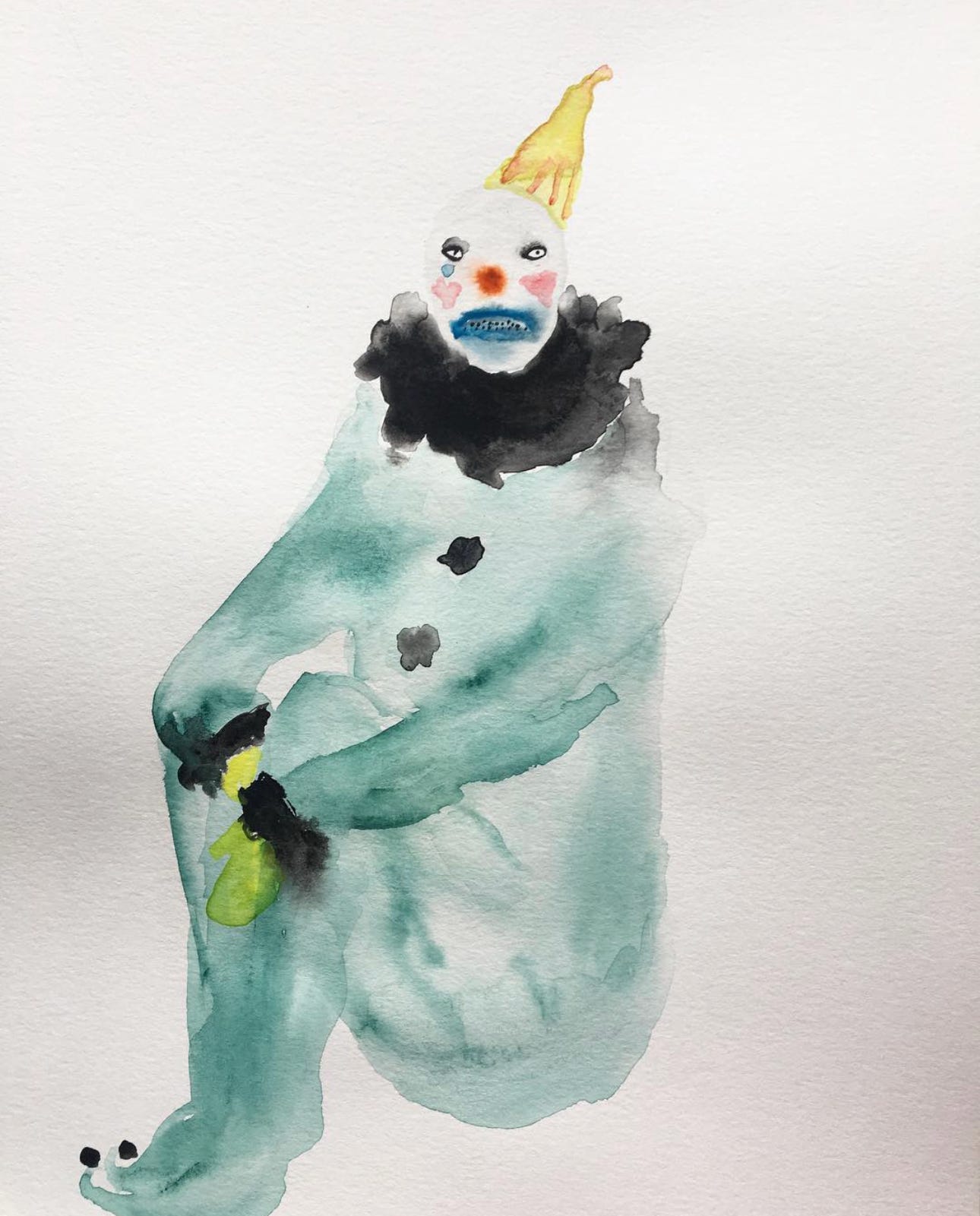
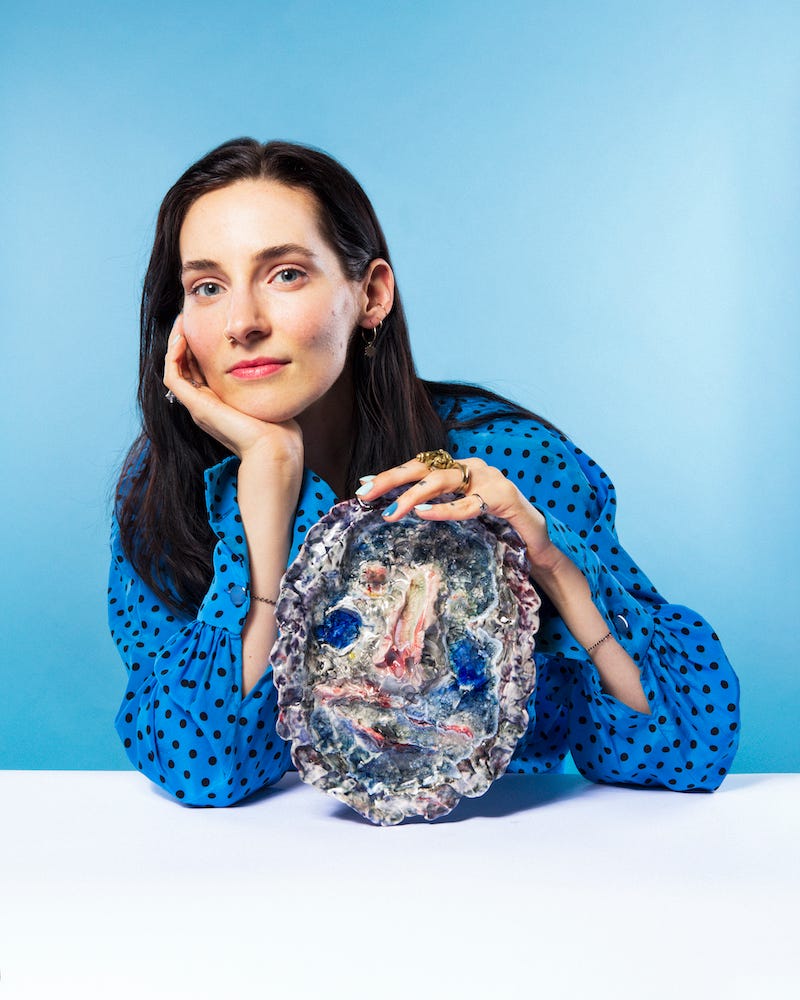
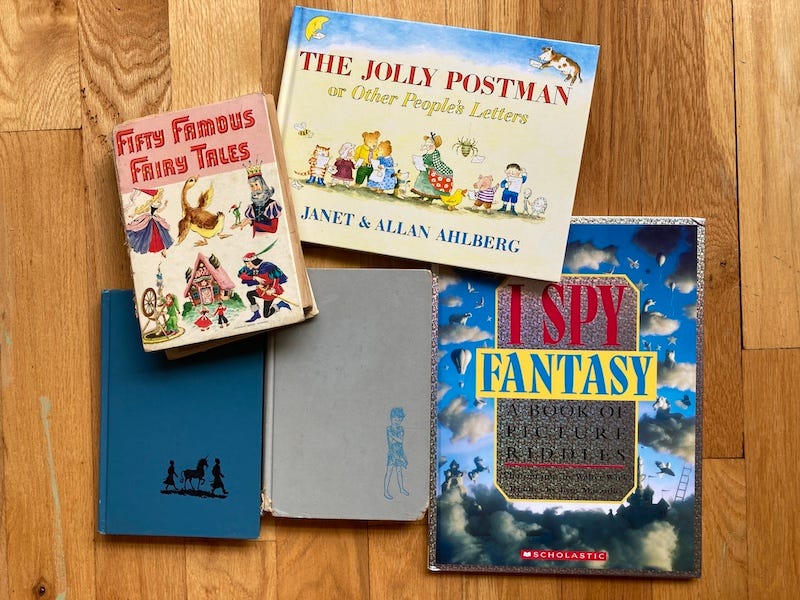
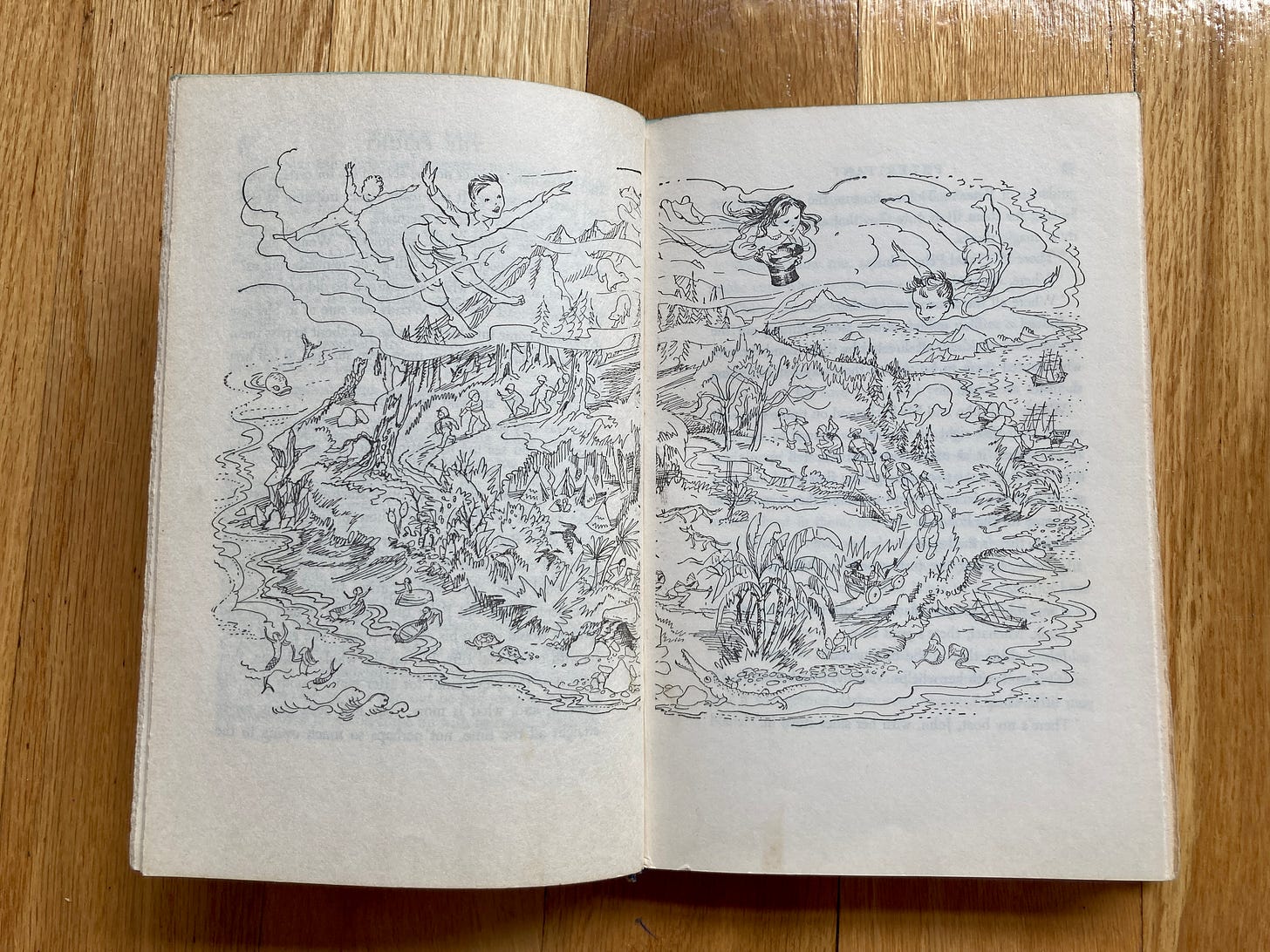

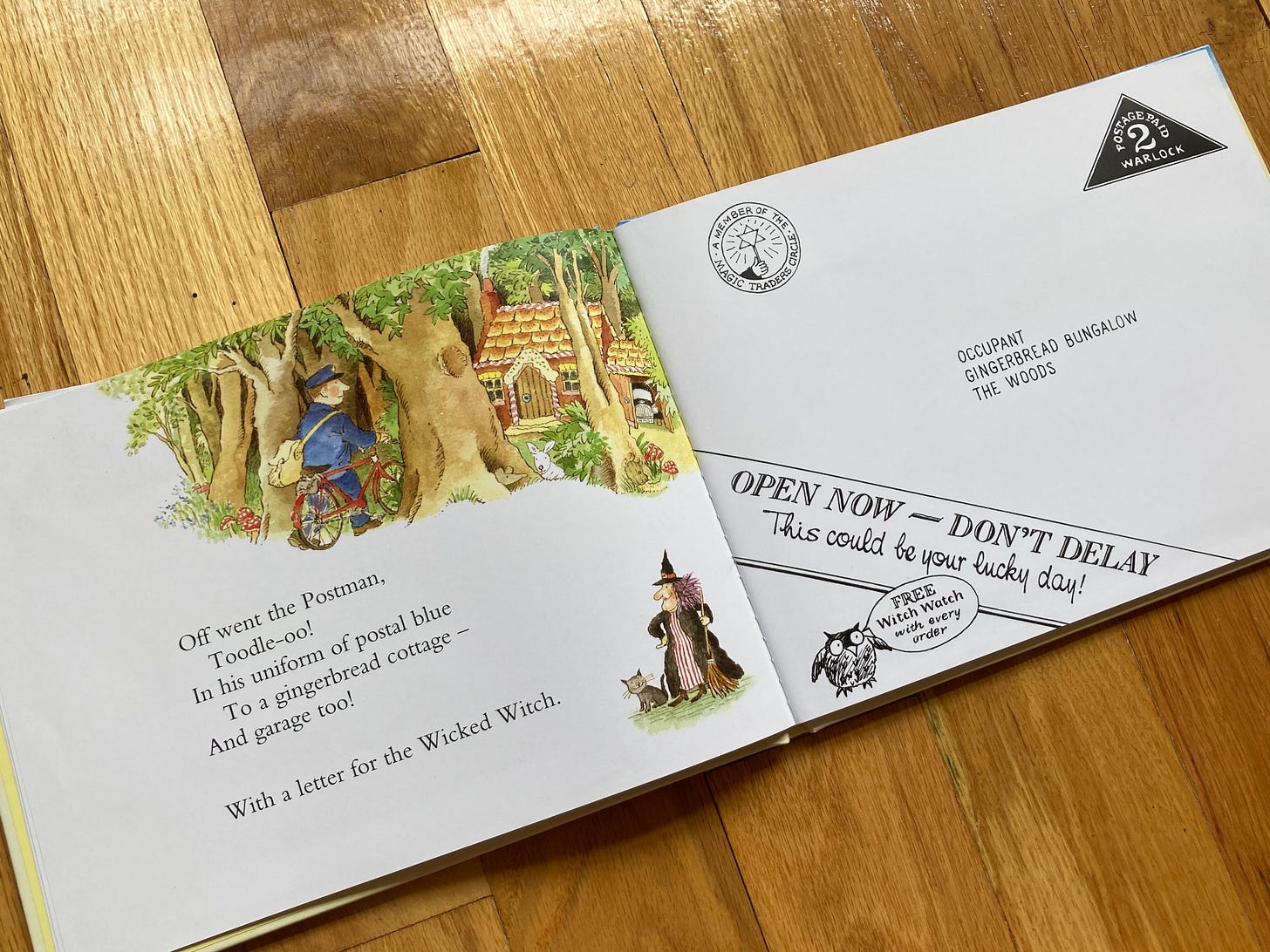

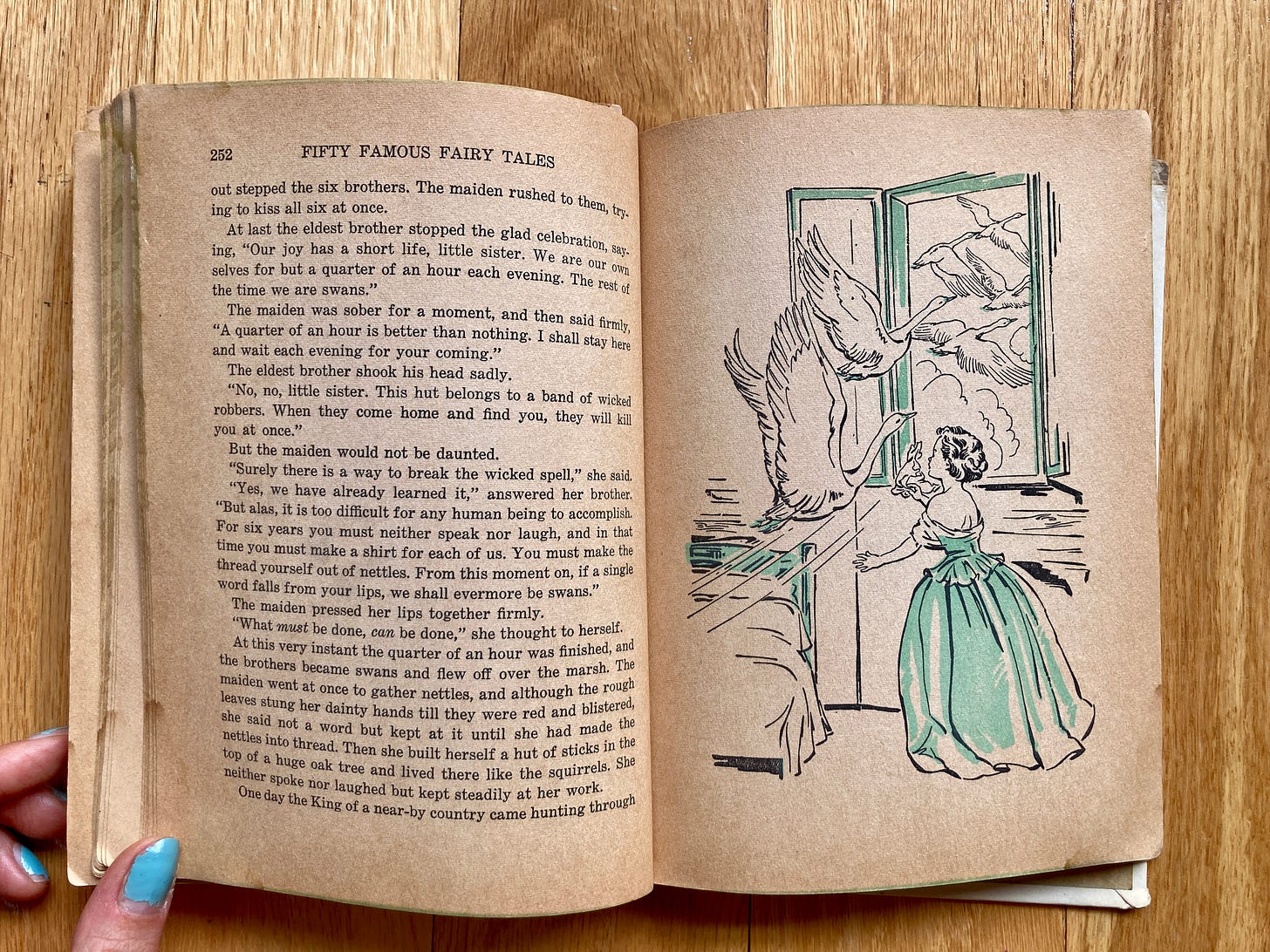



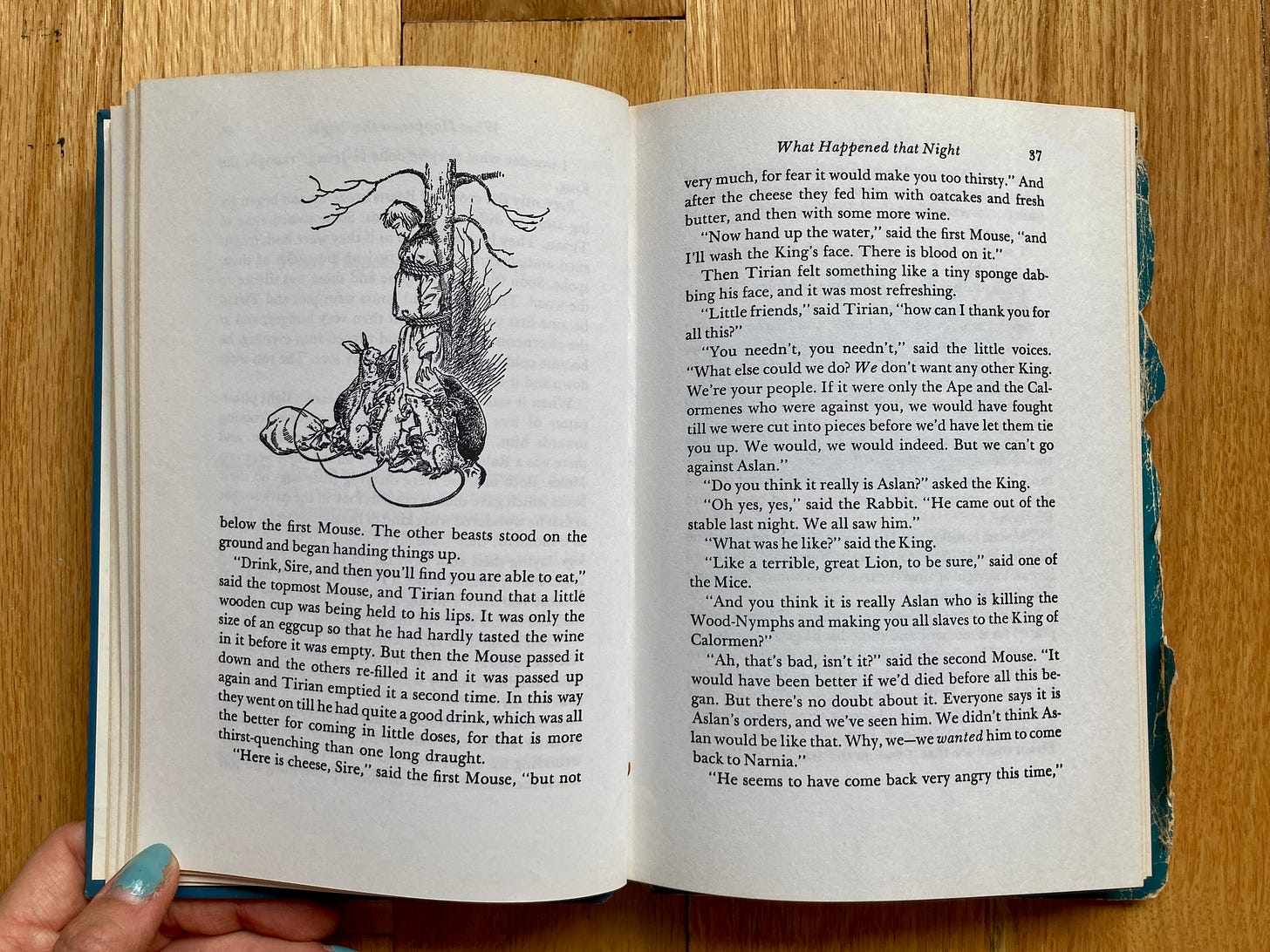

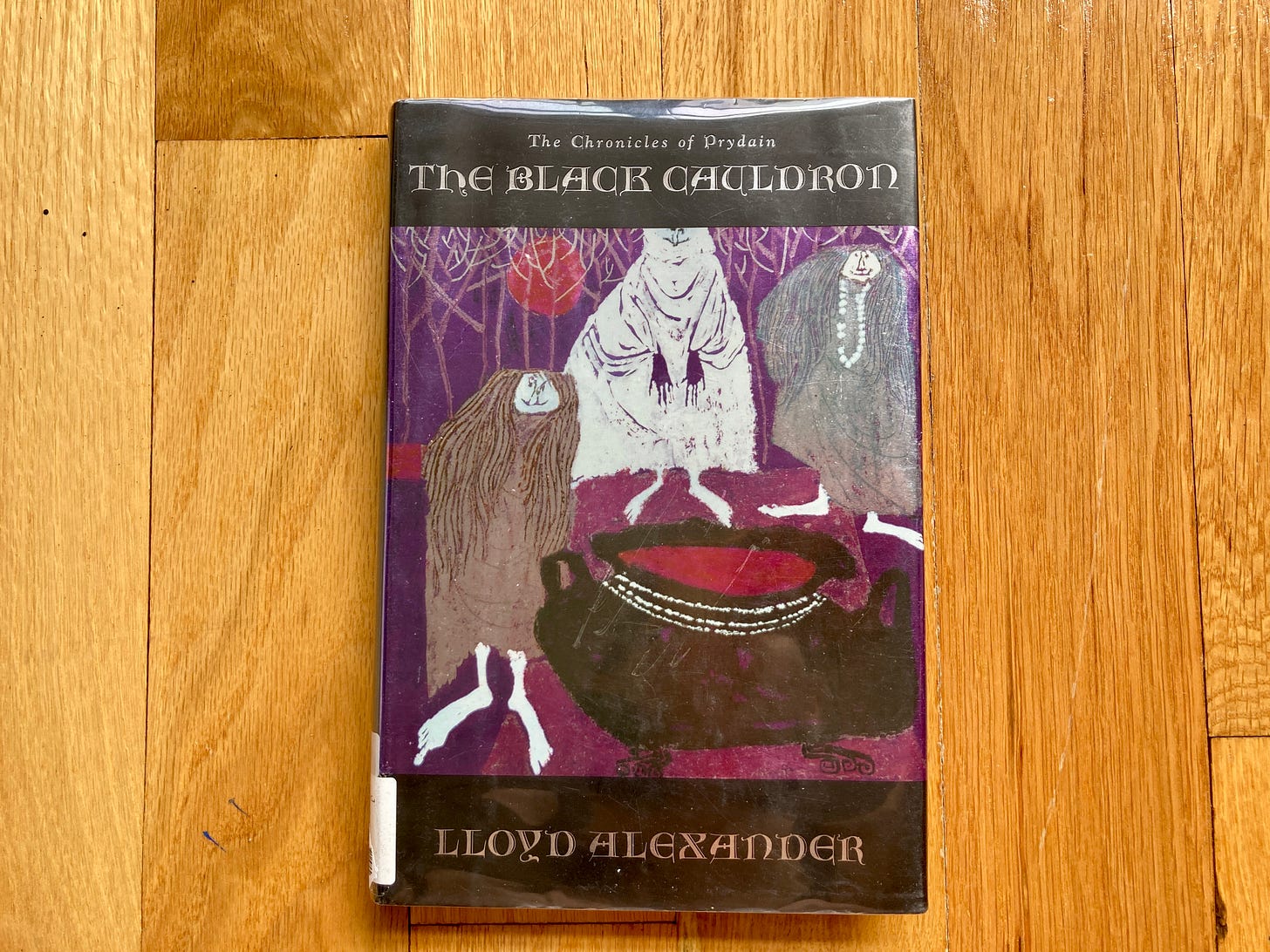


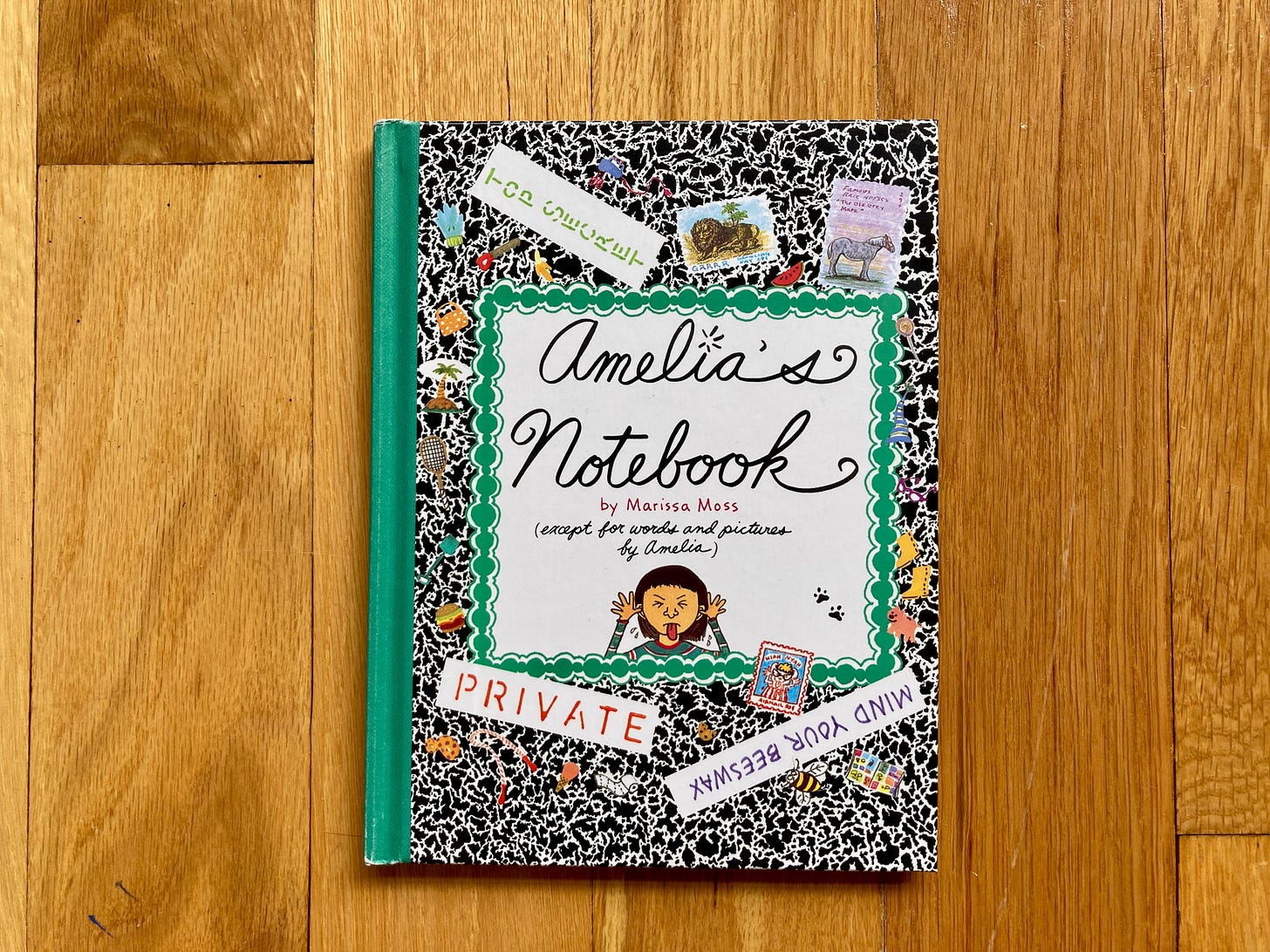


“Moonbow is less about recommending children’s books and more about unraveling how these stories shape young impressionable minds.” I love this, Taylor—and I love how reading Moonbow always makes me realize how much something shaped my young impressionable mind. Case in point: Hobgoblin Supplies Ltd.!!!
Apologies, for a slightly out of the blue comment, but have just come across your lovely substack.
Given your theme and how deeply you think about books impacting who we are, I wondered if you’d consider writing a guest post for The Books That Made Us.
We’re a community of writers and readers (~1600 at current count) who share stories of what we call ‘foundational books’ - I.e. books that made us who we are today. Every post is written by a different writer on Substack and would hopefully be a good way of getting your Substack in front of new readers.
If this is of interest then details are here:
https://booksthatmadeus.substack.com/p/write-for-us